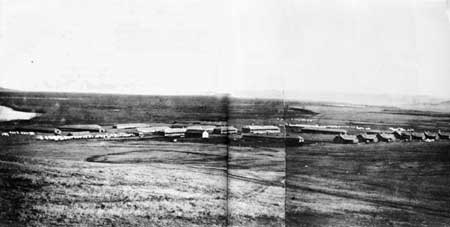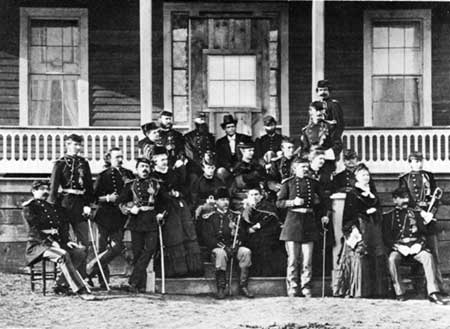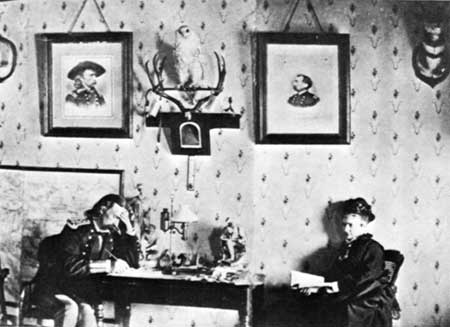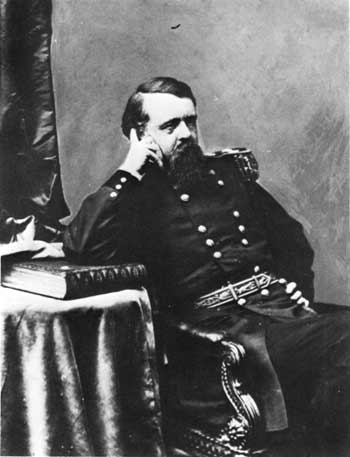|
LITTLE BIGHORN BATTLEFIELD National Monument |
 |

Fort Abraham Lincoln, Dakota Territory. Located on the west bank of the
Missouri River about 10 miles south of Bismark, the territorial capital,
Fort Lincoln was Custer's base of operations from 1875 until 1876. It
was from here on May 17, 1876, that the Dakota Column set out on the
campaign that ended in Custer's defeat and death on the Little Bighorn.

Group of 7th Cavalry officers and ladies at Fort Lincoln, 1873.
General Custer is third from left; Mrs. Custer is the first lady from
the left on the lower step.

Custer and his wife in their home at Fort Lincoln, about 1875. Large
portrait on the wall at left is of Custer in Civil War garb; the one
on the right is of Gen. Philip Sheridan.

Col. John Gibbon led the Montana Column on the march from Fort Ellis
to the Little Bighorn. A battle-scarred veteran of 34 years server,
Gibbon gained fame in the Civil War as commander of the "Iron Brigade,"
and later rose to the rank of major general and the command of an infantry
corps. After the war he continued in the Regular Army, serving for nearly
20 years as colonel of the 7th Infantry.

Brig. Gen. Alfred H. Terry commanded the Dakota Column. A former lawyer,
he rose to the rank of major general in the Civil War and distinguished
himself in the capture of Fort Fisher, S.C. Near the end of the war he
secured as brigadier's commission in the Regular Army and was later
assigned to command the Department of Dakota. Although not a professional
soldier, Terry proved an able and well-liked general.

|
|
Last Modified: Sat, Sep 28 2002 10:00:00 pm PDT |


